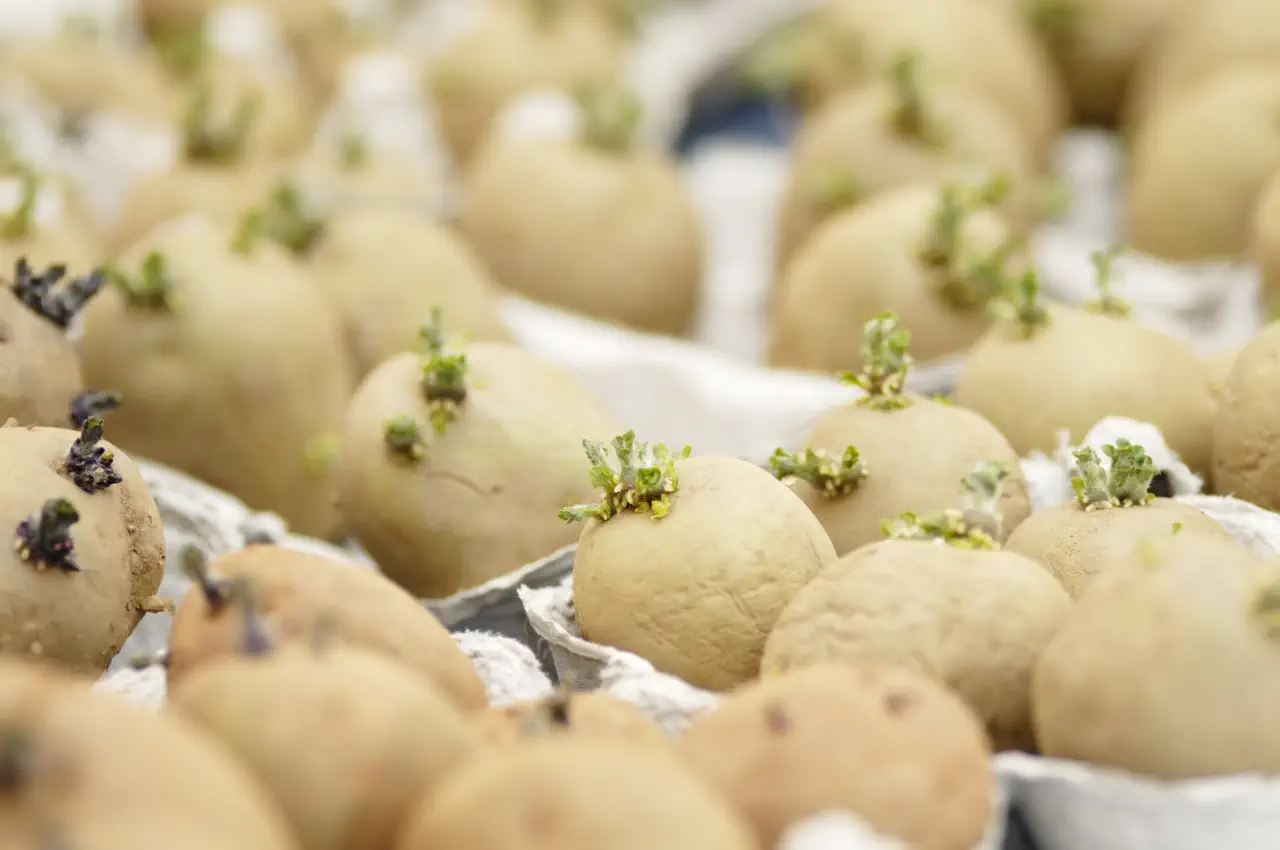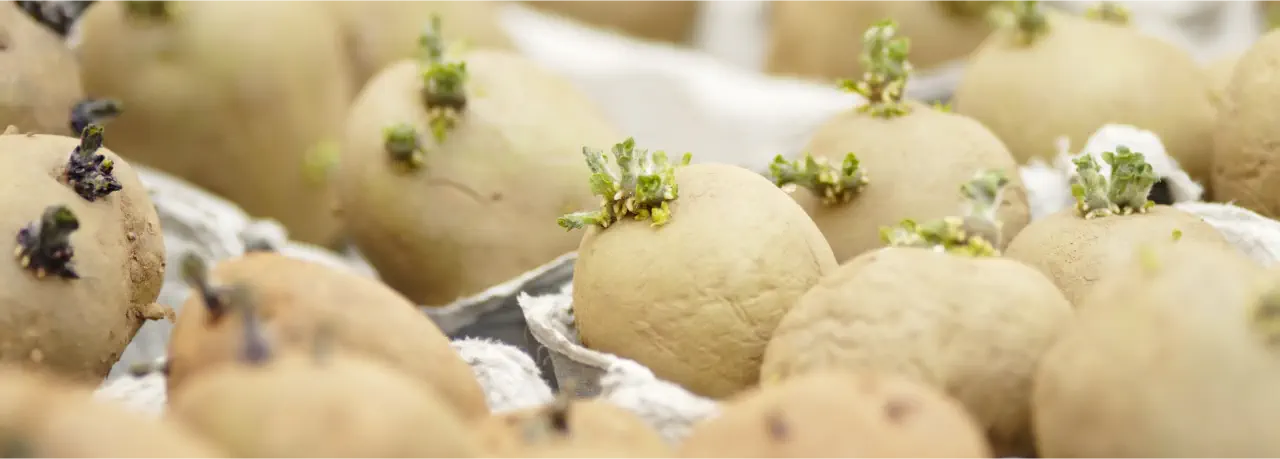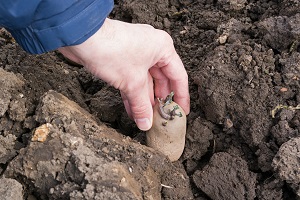Growing strawberry plants in the UK can be a rewarding experience, as our climate is generally suitable for this fruit.
If you're not getting the desired yield from your strawberry plants, there could be several factors at play....

This age old question has been bounded around amongst potato growers for many years, with no definitive answer. There are valid arguments for and against and many differing viewpoints amongst both the commercial growing industry sector and the amateur growing community.
Some thinking is based in favour of both chitting and non-chitting, dependant entirely on whether the subject is early potatoes, second earlies or main crop. Other questions worthy of consideration include timing, temperature and location. The consensus is however, amateur growers do and commercial growers don’t. The unresolved question is still whether it is really necessary.
To chit a seed potato simply means to break the dormancy and encourage shoots to form prior to planting. This routine can be carried out from late January for early cropping varieties and around mid-February for second earlies.
The best method is to place the seed potatoes in seed trays or egg boxes with the rose end facing upwards. The rose end is the blunt end with the most ‘eyes’, which will form sprouts or shoots.
Next, place the seed potatoes in a light, dry room or greenhouse with a cool to warm ambient temperature of between 7C and 12C. When the new shoots are about 1-2cm high, which can take around two to three weeks, keep just 3 or 4 and rub out the rest.
Too many shoots can results in lots of very small potatoes, however sometimes this may be what you are hoping for. If the shoots are long and white then remove them and relocate the seed potatoes to a position that provides more light.

Seed potatoes that are not chitted and planted into the soil will grow perfectly well regardless of the variety and regardless of whether they are early, second early or main crop.
Nevertheless, the reason for chitting early and second early seed potatoes is to give them a head start over those that are not chitted. There seems little point however, in chitting main crop seed potatoes, simply because they have a much longer growing season, and therefore chitting has no real advantage.
Seed potatoes that have been prepared by chitting and then subsequently planted may send up their shoots while the danger of frost is still present. In this case, it is wise to cover the new emerging shoots with cloches to protect them from the elements.
 First early seed potatoes, which produce ‘new potatoes’, are planted between mid-March and mid-April, whereas second earlies are planted from mid to late April.
First early seed potatoes, which produce ‘new potatoes’, are planted between mid-March and mid-April, whereas second earlies are planted from mid to late April.
At this particular time of year the soil is still quite cold and could also be wet and cold. So, chitting could give the seed potatoes about two weeks head start over those that have not been chitted.
Plant the seed potatoes in trenches 15cm deep, placing the rose side facing upwards. Take care not to damage the delicate new shoots when backfilling with soil. As the soil warms up, growth develops at a brisk rate producing many new young potatoes, whilst those seed potatoes that have not been chitted will almost always struggle to catch up, especially if planted during a long cold spell.
Preparing seed potatoes by chitting takes time and a little effort but unless you get the timing right, the whole process could prove futile. In the UK, timing is everything and much depends on the area or location, in which you live.
In the south of the country for example, you could begin chitting during late January, whilst in the northern regions it would be advisable to wait until mid-February. Frost is an ever present danger to the new emerging shoots of potatoes at this early time of year so it would be wise to ensure they are protected with cloches or cloche tunnels.
Also, placing cloches or tunnels over the newly planted areas can help warm the soil and prevent excessive rain water from penetrating the trenches, which could otherwise cause the seed potatoes to rot.
Seed potatoes that have been chitted need to be handled with care so that the young shoots are not damaged at planting time. However, another disadvantage is that disease can enter the tubers through any shoots that have been rubbed out, creating entry points for infection.
As you can imagine it would be very time consuming for commercial growers to personally handle every seed potato and store them at just the right temperature to encourage shoots to sprout. They would again need to personally handle them, with care, before planting them out in the fields. The costs would be totally prohibitive.
So what do commercial growers do? Instead, many of them keep their seed potatoes, which can number into the tens of thousands, in cold storage. That is to say, they store them at below 4C until the time is right to plant them. They must also be stored in a dry airy place because any humidity or condensation in the air could cause damaging fungal growth. Should any shoots inadvertently appear on the seed potatoes, they will simply leave them.
When it comes to the actual timing for planting seed potatoes, commercial growers will wait until the soil temperature hits the magic 6C-7C. This is the optimum temperature for planting into the ground.
At 4C the tubers are dormant but with a degree or two above, they will begin to grow. That’s quite a useful tip for the amateur grower to remember. Other important factors apply to depth of planting and spacing, which are similar to those that amateur growers would implement or recommend.
If there is a conclusion, it is that commercial growers do not chit their seed potatoes due to labour, timing and cost considerations.
Whereas the amateur grower has a choice, and if they have been successful with growing potatoes in the past, especially earlies, by either chitting or not chitting then there is obviously no reason to change now.
Anyone completely new to growing potatoes, might want to try both chitting and non chitting to see how they fare. How else would you know for sure, which method is best for you and your location?
Did you find this post Useful? So will others, please like it on Facebook, or share on Twitter.
Have we missed anything out? Please leave a comment below and let everyone know what....
All blog content on this page is copyright of Simplyseed and is not to be reproduced without prior written permission. ©
Thank you, very informative, i've chitted this year but worrying the potatoes are ready to plant but its still too cold here and they'll pop their heads u while I'm on holiday in May.
I won't chit next year.
Have always chatted potatoes, but didn't know to only keep 3 or 4 shoots. Always wondered why resulting spuds were small . Thank you for that.
I've heard stories of people cutting seed potatoes in half, hardening off the cut side for a couple of days to avoid infections getting in and then chitting the halves. Has anyone had experience of doing this, because I'm thinking of trying it with some of the larger seed potatoes